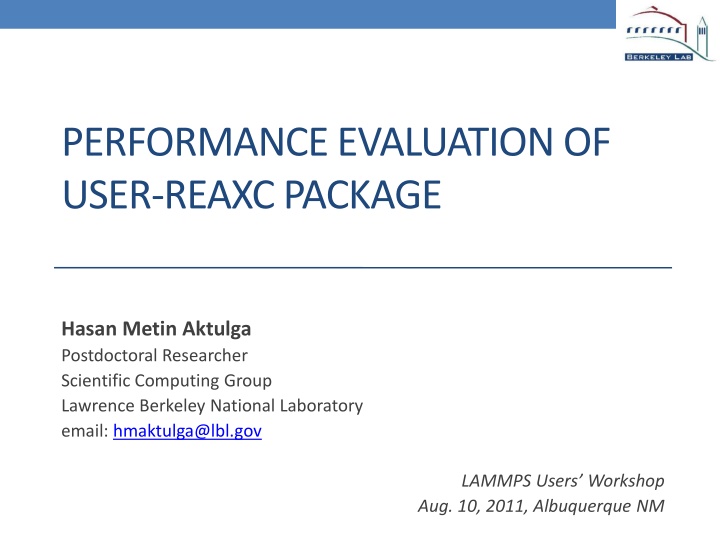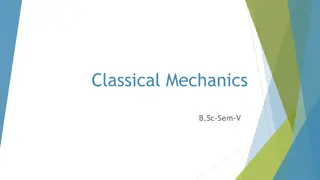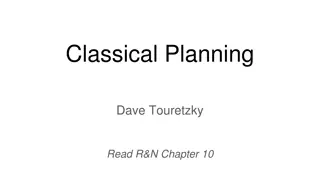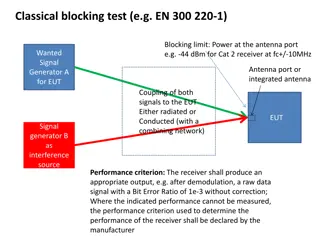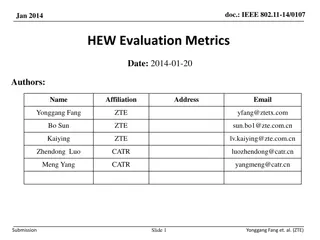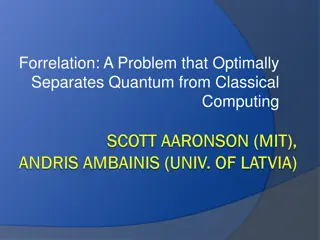Performance Evaluation of User-ReaxC Package: ReaxFF vs. Classical MD
ReaxFF and Classical MD are compared in the context of the User-ReaxC package, which is based on PuReMD for Reactive Molecular Dynamics. The package offers key contributions such as bond order derivatives elimination and compact data structures. It includes a QEq Solver for Charge Equilibration and demonstrates strong scalability in weak and strong scaling scenarios.
Download Presentation

Please find below an Image/Link to download the presentation.
The content on the website is provided AS IS for your information and personal use only. It may not be sold, licensed, or shared on other websites without obtaining consent from the author.If you encounter any issues during the download, it is possible that the publisher has removed the file from their server.
You are allowed to download the files provided on this website for personal or commercial use, subject to the condition that they are used lawfully. All files are the property of their respective owners.
The content on the website is provided AS IS for your information and personal use only. It may not be sold, licensed, or shared on other websites without obtaining consent from the author.
E N D
Presentation Transcript
PERFORMANCE EVALUATION OF USER-REAXC PACKAGE Hasan Metin Aktulga Postdoctoral Researcher Scientific Computing Group Lawrence Berkeley National Laboratory email: hmaktulga@lbl.gov LAMMPS Users Workshop Aug. 10, 2011, Albuquerque NM
ReaxFFvs. Classical MD ReaxFF Classical MD Basis: atoms Parameterized interactions Newtonian mechanics Several common interactions Fully atomistic May represent atoms in groups Dynamic bonds Static bonds Dynamic charges Static charges (in general) Can study reactive systems Only non-reactive systems Sub-femtosecond time-steps Femtoseconds long time-steps
USER-REAXC Package IS BASED ON PuReMD (Purdue Reactive Molecular Dynamics) Built on sPuReMD using 3D Mesh decomposition Extends its capabilities to large systems, longer time-scales Demonstrated scalability over 3000 processors GENERAL FEATURES Implemented from scratch in C Modular implementation for further improvements, extensions Distributed freely under GPL RELATED PUBLICATION Parallel Reactive Molecular Dynamics: Numerical Methods and Algorithmic Techniques H. M. Aktulga, J. C. Fogarty, S. A. Pandit, A. Y. Grama To Appear in the Parallel Computing Journal
USER-REAXC: Key Contributions Elimination of Bond Order Derivatives List Tabulated Long-Range Interactions Natural cubic splines for excellent accuracy, low memory footprint Observed speed-ups of 3x Advanced Dynamic Memory Management Compact data structures Dynamic and adaptive lists Low memory footprint, linear scaling with system size!
USER-REAXC: QEq Solver Charge Equilibration (QEq) Problem Need to solve the following equations: FIX QEQ/REAX Preconditioned Conjugate Gradient (PCG) solver Diagonal pre-conditioner Smart initial guesses (through linear and quadratic extrapolations) Redundant computations to eliminate a communication step Iterate both systems together to save on communication (TO DO)
PuReMD (USER-REAXC) Scaling Weak Scaling: Bulk Water Per core: 6540 atoms in a 40x40x40 A3 box Strong Scaling: Bulk Water 52320 atoms in a 80x80x80 A3 box
PuReMD (USER-REAXC) vs. REAX Weak Scaling: Bulk Water Per core: 6540 atoms in a 40x40x40 A3 box Strong Scaling: Bulk Water 52320 atoms in a 80x80x80 A3 box
On Memory Footprints LAMMPS-REAX: static allocations during compile time USER-REAXC: dynamic and adaptive allocations at runtime Memory Footprints of LAMMPS-REAX vs sPuReMD* * PuReMD: slightly larger memory footprint than sPuReMD * USER-REAXC: extra storage space for LAMMPS internals
Future Work Improve the QEq Solver Improve the SpMV in the iterative solve Use a Neutral-Territory (NT) Method to reduce communication Maybe use communication-avoiding solvers (like CA-GMRES + CA-ILUT) Hybrid OpenMP/MPI implementation to reduce communication Especially necessary as we move towards many-core era THANK YOU! QUESTIONS?
